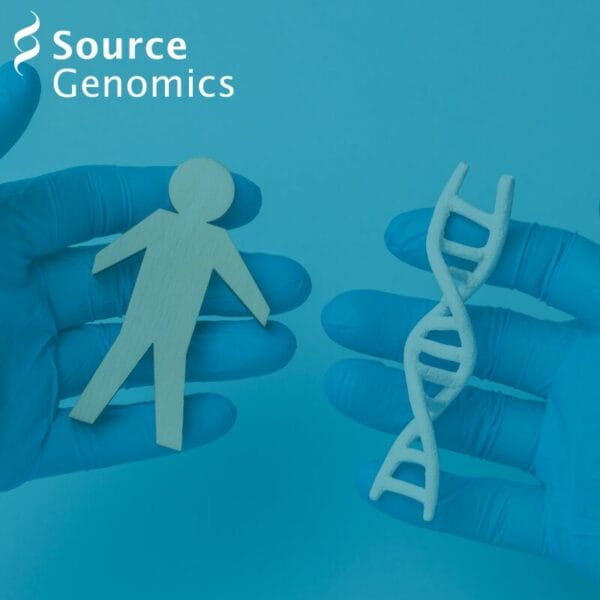Optical Genome Mapping – A Promising Genomic Analysis Technique
An abundance of diseases, from Duchenne muscular dystrophy to cancer, are characterised by hallmark genomic aberrations. As a result, comprehensive mapping of the human genome is imperative in disease diagnosis, prognosis, and development of targeted therapeutics. Current standard-of-care genomic analysis techniques, such as karyotyping, are limited by low resolution, high costs, and the inability to detect complex structural variants (SVs), highlighting the need for new or complementary technology.
Optical genome mapping (OGM) has emerged as a highly encouraging imaging approach for the detection and characterisation of genomic SVs with potential disease implications, including those excluded by existing sequencing technologies. The technique utilises mapping of restriction enzyme sites on single DNA molecules to label individual genomic regions, enabling both high-resolution genome reconstruction and genome-wide analysis.
The OGM technique
OGM uses a multidisciplinary approach, starting with the isolation of ultra-high molecular weight (UMHW) DNA from various sample types, from blood to tissue biopsies.
A single restriction enzyme reaction recognises and fluorescently labels a frequently occurring 6 bp motif, generating a sequence-specific arrangement of labels. The labelled DNA is loaded into a single flow cell of a nanochip, then carefully linearised and guided into nanochannels via electrophoresis. Each nanochannel allows only one unwound nucleic molecule to pass through, enabling single-molecule DNA analysis.
Following this, the high-resolution camera within the genome mapping instrument images the long DNA molecules, and the captured images are converted into digital emulations of the unique label pattern. High-resolution genome maps are then assembled by data analysis software.
Applications of OGM
OGM precisely identifies all classes of genome-wide SVs, from copy number variations (CNVs) to insertions/deletions of just 500 bp in size.
Long-range OGM data has been used to improve genome assemblies. Other assembly techniques require the alignment of the DNA sequence to a reference genome, which is often not representative of the average global population. The use of ultralong DNA molecules (>100 kb) in OGM negates the need for a reference genome, providing high-resolution imaging of the entire genome, including rare large-scale SVs which are often poorly assembled due to reference genome bias.
Further, the de novo genome assemblies made possible by OGM show outstanding promise for comparative genomics. OGM data from individuals affected by a specific disease can be directly compared to healthy controls, allowing the identification and characterisation of the impact SVs pose on the genome.
Advantages of optical genome mapping
In first-line prenatal and postnatal diagnostics, cytogenetic methods are often used to identify chromosomal aberrations, but these techniques are limited by a low resolution of 3-10 Mbp. In contrast, OGM detects unbalanced/balanced SVs of even 30 Kbp in size, allowing the discovery of a whole new catalogue of potentially pathogenic SVs.
Moreover, the mapping of previously described ultralong DNA molecules leads to significantly improved accuracy relative to existing short-read technologies. For example, OGM identified a pericentric inversion in a patient with inherited retinal dystrophy, disrupting the USH2A gene. Previous sequencing deemed this a false positive, whereas OGM characterised the resultant disease-implicated sequence breakpoint, bridging this diagnostic gap.
In multiple studies, OGM has demonstrated 100% concordance with existing combinatorial cytogenetic assays, whilst exhibiting a much faster turn-around time (from sample to report in four days), as there is no need for cultivation before sample processing. The detection of the full range of cytogenetic abnormalities in a single assay illustrates much greater efficiency, making OGM a cost-effective technique option for genome-wide analysis.
Comparing OGM with Next-Generation Sequencing methods
Whilst OGM and next generation sequencing (NGS) both provide insight into genomic structure, the two techniques exhibit distinct differences. NGS offers base-level resolution of small-scale genetic variants, including short insertions/deletions and SNPs, whilst OGM is invaluable in identifying large-scale SVs and complex chromosomal rearrangements. Consequently, NGS and OGM are often used in tandem to comprehensively view the genome, with OGM allowing the direct observation of SVs, which could only be inferred from NGS data.
Further, NGS has notable limitations when accurately detecting variations in/around repetitive sequences, which constitute around two-thirds of the genome. OGM overcomes these constraints, allowing geneticists to identify those complex SVs and making the addition of an OGM assay a progressive benefit to research.
The future of OGM in genetic analysis
Recently, OGM has demonstrated significant promise in replacing chromosome banding analysis (CBA) as the standard of care for SV evaluation in myelodysplastic syndromes (MDS) — characterised by large-scale SVs and SNPs. In this study, newly diagnosed MDS patients underwent both standard cytogenetic studies and OGM, complemented by NGS. OGM and NGS identified 51% of SVs in 34% of patients deemed cryptic by CBA, including complex genomes.
OGM confirmed its potential for improving the current workflow involved in MDS genomics, detecting a magnitude of SVs that escaped identification by CBA, and could be examined for potential targeted developments. This example, along with many others being uncovered as time and research progresses, gives OGM a promising future in broad research areas such as clinical diagnostics and genomic medicine.
Clearly, OGM demonstrates great promise in identifying significant SVs in the human genome, bridging the analytical gap created by existing sequencing technologies. The coupling of NGS and OGM could be applied to major genetic diseases that exhibit SVs — advancing diagnostics, prognostics, and improving the accuracy of standard-of-care genomic screening procedures for more informed therapeutic decisions.
Contact Source Genomics today
Using the Bionano Genomics Saphyr System, Source Genomics provides a premium OGM service for high-throughput, rapid-turnover SV detection and analysis, with unparalleled sensitivity and specificity. Get in touch with one of our account managers today to discover how OGM can offer you a comprehensive and high-resolution exploration of genome structure.
Sources
- https://ashpublications.org/bloodadvances/article/7/7/1297/493328/Optical-genome-mapping-in-acute-myeloid-leukemia-a
- https://www.sciencedirect.com/science/article/abs/pii/S2589408021000181
- https://www.ncbi.nlm.nih.gov/pmc/articles/PMC8701374/
- https://pubmed.ncbi.nlm.nih.gov/33982372/
- https://bionano.com/how-ogm-works/
- https://www.sciencedirect.com/science/article/pii/S258900422200030X
- https://www.ncbi.nlm.nih.gov/pmc/articles/PMC6735870/
- https://www.gimjournal.org/article/S1098-3600(22)01029-2/fulltext
- https://www.sciencedirect.com/science/article/pii/S2001037020303500
- https://bmcbioinformatics.biomedcentral.com/articles/10.1186/s12859-020-03623-1
- https://academic.oup.com/bioinformatics/article/39/3/btad137/7079794
- https://www.ncbi.nlm.nih.gov/pmc/articles/PMC8001299/
- https://www.ncbi.nlm.nih.gov/pmc/articles/PMC6528456/#:~:text=NGS1%2D4%20is%20a,sequencing%20matrices%2C%20and%20bioinformatics%20technology
- https://www.sciencedirect.com/topics/immunology-and-microbiology/dna-sequencing
- https://sourcebioscience.com/genomics/optical-genome-mapping/
Contact us today and one of our skilled account managers will be in touch with a free consultation including further information and pricing details.
Share this article

